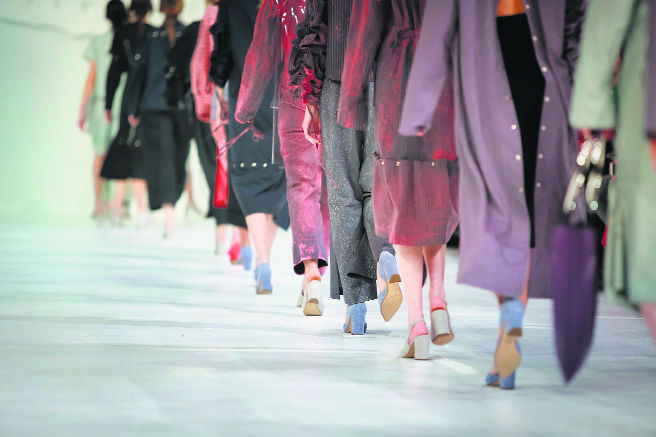While COVID-19 has impacted various industries across the board, some have swiftly adapted, while others have seemingly missed the mark. The fashion industry was significantly unprepared for the pandemic’s magnitude, despite their virtual efforts and ethical intentions.
In early April, the British Fashion Council acted promptly, creating a “Cultural Fashion Week Platform” exclusively for London Fashion Week. Smaller ‘on the rise’ brands were the highlight, including 8on8, Ræburn, and the greater-known Farfetch. Advertisements, social media posts, and articles to promote their virtual showcase were scarce to non-existent. Vogue Business was amongst the first publications to note the “failed attempt to draw significant attention online.”
Business of Fashion reported stats following the closing of BFC’s new take on virtual fashion week. According to Launchmetrics, there was a 55% drop in social media engagement since January. On average, “digital shows, videos, and presentations generated less than ⅓ as much online engagement” as they typically would, according to Tribe Dynamics tracking firm.
These “phygital” events have fallen flat in the eyes of the public for a multitude of reasons. Considering the lack of intention in getting dressed for work or recreation, fewer consumers have been focusing on shopping. In place, budget cuts were amongst the first restrictions implemented on most fashion houses, prohibiting the full-range ability to sponsor influencers or invite them to on-site shows an effort to promote new collections. Considering influencer social media has a more significant market impact than brand posts and advertisement, it seems many companies and fashion houses struggle with the direction of media engagement. In other words, phygital f*ck ups are taking an expensive toll on the industry across the globe.
Through the crash and burn of phygital runway experiences, designers who pushed for on-site venues didn’t have as much of an impact as anticipated. Hermès hosted a live performance in early July with the absence of an audience; Jacquemus presented their on-site lavender field runway show but received roughly half of its typical media value compared to previous seasons. These questions have brand leaders and marketing analysts baffled and searching for a solution.
Despite the widespread economic plunge across the spectrum of fashion houses and smaller brands, a select few have risen to the challenge, paving the foundation for the industry’s new digital media wave. Shanghai Fashion Week teamed with Alibaba’s Tmall dubbed “Cloud Fashion Week,” views reaching over 2.5 million during the three-hour opening session alone. Ffixxed Studios endeavored a Chinese television-esque comedy show with the brand’s sleek and edgy wardrobe worn by Bohan Qiu and other influencers. This method was deemed successful with stats reaching over 70,000 likes and 9,000 views just ten minutes into the broadcast. While these stats are still lower than usual, it appears the most successful solutions were able to capture an emotional connection with audiences from behind the screen.
In response to new measures within the realm of digital media, Pascal Morand explains, “This is not a substitute, it’s something new.” The solution no longer lies in a memorable collection alone, but through modernizing advertising strategies, updated branding, a boost in team morale, and the thoughtful re-evaluating public accessibility. Fashion Houses looking to collaborate, innovate, and celebrate each other will undoubtedly create the strongest impact through digital platforms. This rejuvenated mentality comes with the media’s mindset as an equal art form to tactile fashion design.
Words by Anna Vescovi
Image from The Tribune India

